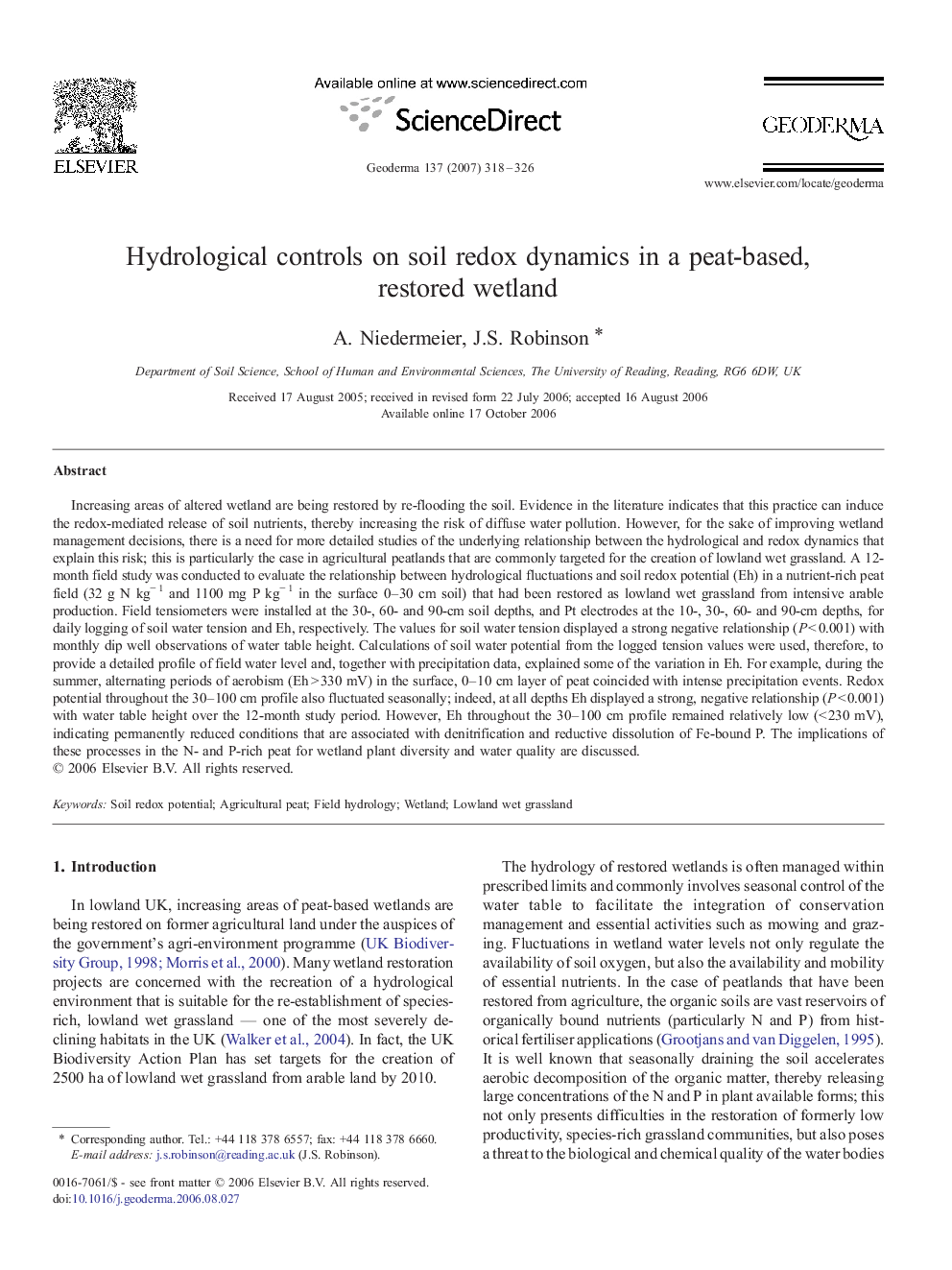| Article ID | Journal | Published Year | Pages | File Type |
|---|---|---|---|---|
| 4575423 | Geoderma | 2007 | 9 Pages |
Increasing areas of altered wetland are being restored by re-flooding the soil. Evidence in the literature indicates that this practice can induce the redox-mediated release of soil nutrients, thereby increasing the risk of diffuse water pollution. However, for the sake of improving wetland management decisions, there is a need for more detailed studies of the underlying relationship between the hydrological and redox dynamics that explain this risk; this is particularly the case in agricultural peatlands that are commonly targeted for the creation of lowland wet grassland. A 12-month field study was conducted to evaluate the relationship between hydrological fluctuations and soil redox potential (Eh) in a nutrient-rich peat field (32 g N kg− 1 and 1100 mg P kg− 1 in the surface 0–30 cm soil) that had been restored as lowland wet grassland from intensive arable production. Field tensiometers were installed at the 30-, 60- and 90-cm soil depths, and Pt electrodes at the 10-, 30-, 60- and 90-cm depths, for daily logging of soil water tension and Eh, respectively. The values for soil water tension displayed a strong negative relationship (P < 0.001) with monthly dip well observations of water table height. Calculations of soil water potential from the logged tension values were used, therefore, to provide a detailed profile of field water level and, together with precipitation data, explained some of the variation in Eh. For example, during the summer, alternating periods of aerobism (Eh > 330 mV) in the surface, 0–10 cm layer of peat coincided with intense precipitation events. Redox potential throughout the 30–100 cm profile also fluctuated seasonally; indeed, at all depths Eh displayed a strong, negative relationship (P < 0.001) with water table height over the 12-month study period. However, Eh throughout the 30–100 cm profile remained relatively low (< 230 mV), indicating permanently reduced conditions that are associated with denitrification and reductive dissolution of Fe-bound P. The implications of these processes in the N- and P-rich peat for wetland plant diversity and water quality are discussed.
